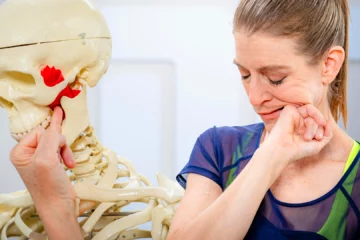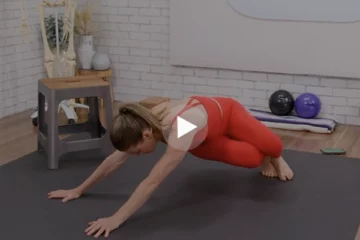
Asthma is a chronic obstructive lung disease affecting twenty five million children and adults in America*. Saying that differently, one in twelve people have asthma*. That’s a lot of people! Individuals with asthma are essentially under attack by the environment around them. Allergens, exercise, colds, flus, and stress can trigger an asthma attack on a moment’s notice. Most asthmatics know what their triggers are and hopefully know how to handle their flare ups, but lets talk about what happens during an asthma attack.

An asthma attack occurs when the smooth muscle surrounding the bronchioles (tubes in your lungs) constricts unnecessarily, narrowing the airway and inhibiting the flow of air into and out of the lungs. Think of a water hose with a kink in it; the water doesn’t flow as easily and can even stop entirely due to the blockage. This constriction leads to labored breathing and wheezing as the afflicted individual attempts to maintain appropriate oxygen and carbon dioxide levels. While asthma attacks themselves occur in episodes, those with asthma have chronic smooth muscle constriction in their lungs. This chronic constriction leads to labored breathing throughout the day aggravating the secondary breathing muscles and leading to inappropriate breathing techniques.
During normal breathing, the inspiratory phase (inhale) utilizes the constriction of the external intercostals to expand the rib cage, which pulls the lungs out, while the constriction of the diaphragm causes pulls the lungs down. These two actions combined open the lungs and increase their volume, lowering the pressure in the lungs causing air to flow in. This action is typically done involuntarily throughout your day, meaning that for the most part you don’t have to think about every breath you take, your body will automatically do the work for you. Upon exhale, these primary breathing muscles will relax causing the volume of the lungs to decrease and the pressure to increase, which forces the air back out. Lucky for us this is another action that occurs automatically allowing us the ability to think about things other than our breath. A healthy breath cycle utilizes the primary breathing muscles, the diaphragm and external intercostals, to allow air to flow in and out, creating an abdominal thoracic breath.
As breathing becomes labored and your airways become constricted, as it does with asthma and other strenuous activity, in order to get air in you have to call in some backup. The backup help comes from your secondary breathing muscles. These muscles act to open the clavicle and upper ribs creating a stronger vacuum. This is known as clavicular breathing. These secondary breathing muscles include, the upper trapezius, pectoralis minor, scalenes, sternocleidomastiod, levator scapulae, and serratus posterior superior (think upper back and neck). This list could just go on and on, as anyone with asthma knows, there is a point during an attack where you feel as though you are using your whole body just to take a breath.
Now you may be thinking, why in the world are there muscles surrounding my airways? At what point would I want to constrict my airflow? Let me assure you, there are times, such as when you are just hanging out watching TV, or sitting at your desk at work, where you don’t need as high of a level of oxygen flow. Think rest and digest here. The smooth muscles surrounding your airways can constrict a little allowing oxygen flow to decrease as the demand for oxygen is not high. Conversely, if you are out running a marathon or chasing your kids around the park, the increased muscular work demands more oxygen consumption, which leads to a dilation, or opening, of the airways. Think fight or flight. The smooth muscles surrounding the bronchioles relax a bit allowing for a larger flow of oxygen in and out.
Asthmatics, however, have an ever-present airway constriction causing the secondary breathing muscles to become chronically over worked. The placement of these muscles around the neck and upper back make them an easy, and much needed, target for a little YTU love. Tune in Friday for my favorite rolling techniques to soothe my aching breath!
*http://www.cdc.gov/VitalSigns/Asthma/index.html
If you liked this article, read Belly Breathe The Yoga Tune Up® Way For Stress And Anxiety Relief.
Get your own Coregeous ball for better breathing at home.
Learn specialized techniques that improve your lung capacity.












Its a nice way to see it. AStma people put so much amphisis on their lungs . that they forgot about the muscle that help the breathing.
After having done Synchronized Swimming on an international level, I was really surprised to be told that my bronchials were constricted… Now, a few years later, I know that my Dad had been diagnosed with Asthma as a child and my brother almost couldn’t become a pilot because he got the same diagnosis before his job training. And the last time I was examined before going on a diving vacation, I was also told to have to get checked on a regular basis if I wanted to continue to dive. I don’t know if being exposed to chlorine vapors for hours has increased the constriction, and I also don’t know if it limits my performance in sports in general, but what I do know is that knowing breathing techniques and rolling on the balls – especially the Coregeous(R) Ball, helps me not run out of breath as quickly.
I grew up with asthma and a rescue inhaler was a regular part of my day. My doctors explained there was constriction in my airways, but never as clearly and concisely as you have here. My asthma has lessened to a point where I never notice it anymore, but my mom still struggles with asthma herself and your description will surely help her to better understand what is happening. Not knowing what is actually happening in your body when things go wrong can be one of the scariest parts. Truly appreciate the info and I’m excited to share it with others.
Reading this blog was really instructive for me, someone who outgrew childhood asthma. I only realized recently that, with the high stress I have in my ‘day job’, that I almost always live in fight or flight, and only use my secondary breathing muscles, exacerbating the tightness in my shoulders and neck. I, too, like Tracey, realize that these poor patterns of breath may have a deeper foundation in those very scary asthma attacks, and my need to feel like I was always in control of my breath, not trusting my diaphragm et al to do it for me!
Kevyn, I love your explanation of what happens during an asthma attack. I had asthma from the age of 10-21 and I always think of it as this horrible thing I endured and now I don’t need to worry about it anymore. I had a realization reading about the secondary breathing muscles used during attacks as well as chronically used by someone with asthma – many of these are areas of extreme tightness and tension on me. Even though I no longer have asthma, my body still holds on to this condition in muscle memory.
Thanks for this article. Though slightly different problem than the chronic asthma, I recently noticed a friend had a pattern of reverse breathing (pulled in belly on inhale). This forced him into almost exclusive clavicular breathing… which then explained why he at a fairly young age was developing a “Mr. Burns hump”, and why his collarbones were pitched upwards at a very pronounced angle. When he started working on abdominal breath, he noticed a few interesting changes, he had way more energy and power when playing sports (he wouldn’t feel winded by exertion), he was losing weight/fat (more oxygen in was helping to burn fat) and his posture was correcting itself. I mention this here, because if the compensation for asthmatics is to tend to only breath up into the upper part of the lungs, its good to watch for the physical side effects of this pattern (and yes, roll it out!!).
Having had a few attacks over the years, I can relate to not being able to breath. What an awful feeling. Very interesting article..thanks.
I’ve definitely experienced feeling a greater freedom to breather deeper after rolling out my back on the therapy balls. However, I had no idea that the muscles surrounding the lungs itself were partly responsible for this! I don’t know what I thought asthma was, but this definitely wasn’t it. So cool to learn yet another way that simple self-care and natural techniques can help with a chronic and fairly widespread issue.
Very interesting. I have a dust allergy and experience asthma. I can tell you all of these muscles are chronically tight for me and they will be receiving some Roll Model Ball love tonight before bed!